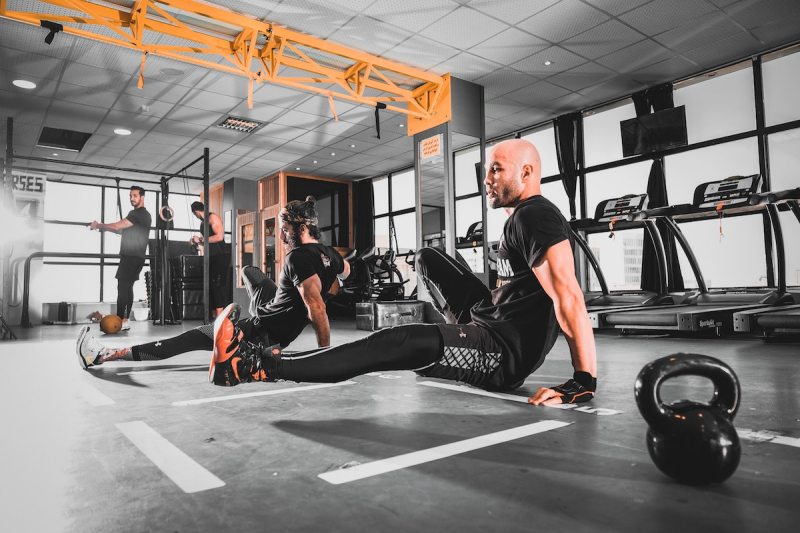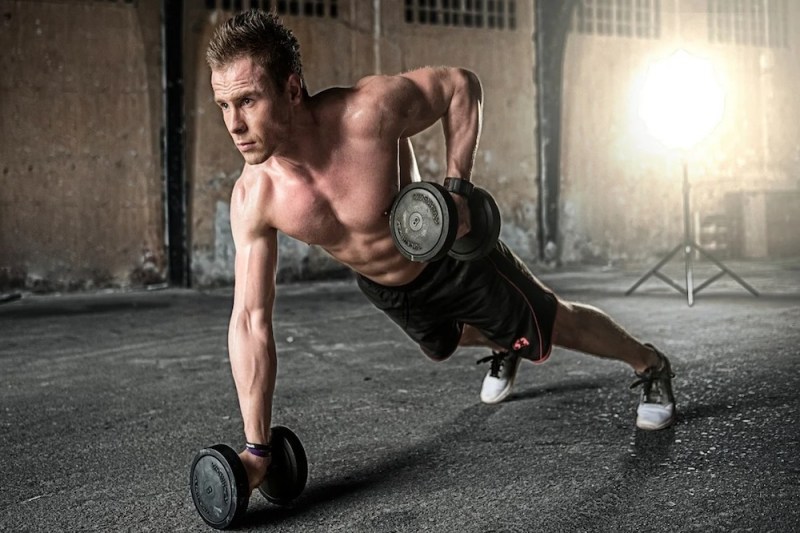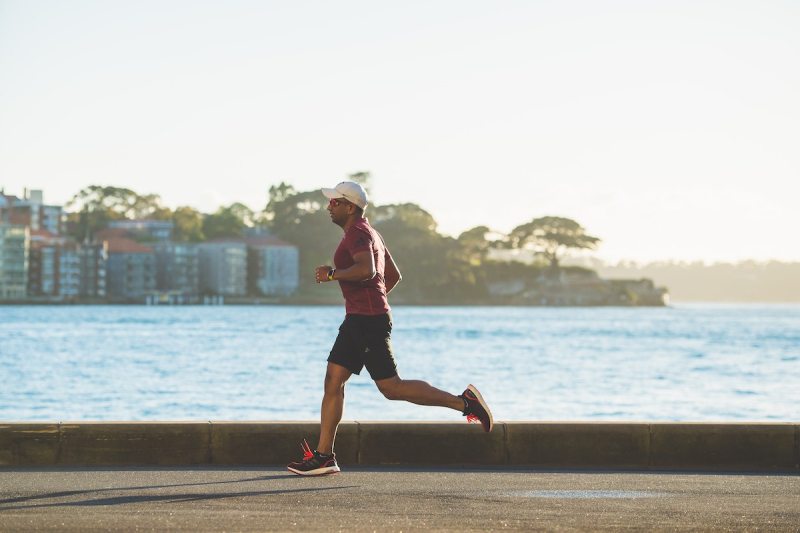
Burning fat and gaining muscle is a common goal among men, and knowing which are the best workouts to lose weight can speed the process up. Dropping weight can lead to you both looking and feeling better, in addition to reducing your risk for various diseases that sometimes accompany excessive body fat.
When paired with a nutritious, calorie-controlled diet, exercise is a highly effective way to lose weight and burn fat. A workout burns calories and can also impact your metabolic rate. However, when it comes to fat-burning workouts and weight loss, not all forms of exercise are created equal. Certain workouts and exercises will help you torch calories and shift your metabolism into a fat-burning mode more than others, so if you have big weight loss goals, keep reading for a list of the best fat-burning exercises and workouts.

How does exercise burn fat?
Before delving into the specific exercises and weight loss workouts that burn fat, it’s helpful to address what is meant by “fat burning.” When most people say they want to lose weight, they mean they want to lose body fat. “Weight” refers to lean mass as well, which includes muscle, bone, organs, etc., so fat-burning workouts are designed to help you lose body fat.
Exercise can help you lose body fat in several ways, as described below.
Exercise burns calories
Body fat is essentially stored energy. Every pound of body fat provides approximately 3,500 calories of energy, meaning that when you consume more calories than you expend, you’ll put on body fat at the rate of one pound per 3,500 excess calories. Similarly, you’ll lose fat at the rate of one pound per 3,500-calorie deficit you create. All forms of exercise burn calories, so your workouts and physical activities contribute to the expenditure side of the equation.
Whether you choose to walk, swim, lift weights, take a yoga class, or do jumping jacks, you’ll expend a certain amount of calories based on the intensity of the workout, the muscles involved, your body weight and composition, and the duration of the workout. Exercises performed at high intensities and that involve your entire body or large muscle groups will burn more calories than low-intensity exercises or those working isolated muscles.
Certain exercises burn fat
Here’s where things can start to get a bit confusing. While all exercise burns calories (and burning calories can contribute to weight loss), exercises performed at a lower intensity actually burn a greater proportion of calories from fat cells. At the same time, more vigorous workouts are fueled predominantly by glycogen, which is the storage form of carbohydrates.
Because of the way the energy production pathways work, fat oxidation slows when the intensity of your workout increases, but this is not to say you’ll ultimately burn more body fat walking versus running, for example. You’ll burn a greater percentage of calories from fat by walking, but the total number of calories burned with a running workout of a similar duration of time will be much higher, so the fat loss will still exceed that of the walk.
However, this isn’t to say that low-intensity exercises cannot be effective fat-burning workouts, but they are less efficient than high-intensity activities.
Exercise increases your metabolic rate
Lastly, exercise increases your metabolic rate. While you certainly burn calories during the workout, depending on the intensity of the workout, you’ll also continue to burn more calories than your baseline rate for several hours after the workout.
Known as excess post-exercise oxygen consumption (EPOC), this revving of the metabolism is due to your body trying to repair and restore everything back to baseline. Furthermore, over time, a consistent exercise program can increase your overall metabolic rate as long as you’re building muscle because muscle is nearly ten times as metabolically active as fat. Putting on muscle thus helps you torch through more calories day in and day out, which can create that deficit you need to lose fat.

Best fat-burning workouts
The best fat-burning workouts either torch a significant number of calories during the exercise, boost your metabolic rate afterward, or help you become a fat-burning machine by putting on lean body mass. Below, we share the four best fat-burning workouts.
High-intensity interval training (HIIT)
HIIT workouts, which involve repeated bouts of very vigorous exercise and recovery periods, are far and away the best way to burn fat. Research indicates that HIIT workouts burn as many calories as a moderate-intensity, steady-state workout in one-third to one-half the time. Moreover, the high intensity of HIIT significantly increases the EPOC afterburn, revving your metabolism for up to 24 hours after exercise. Great fat-burning HIIT exercises include burpees, box jumps, squat jumps, jumping jacks, jumping rope, boxing/speed bag punching, sprinting, and running stairs.
Strength training
Depending on the exercises you choose and the loads you lift, strength training workouts can burn a lot of calories. Total-body exercises and compound moves like squats, deadlifts, and power cleans, especially with heavy weights, expend a lot of energy. However, the real payoff from strength training workouts comes from the metabolic benefits reaped from building muscle mass. To best support muscle hypertrophy, use heavy weights for fewer reps.
Plyometrics
Plyometrics involves explosive movements and rapid force development. You can think of plyometrics as “jump training,” with these plyometric exercises like squat jumps, burpees, and box jumps. These exercises are not only demanding on your cardiovascular system but also involve large muscle groups. Like HIIT workouts, plyometrics rev your metabolism for hours after the workout is over.
Steady-state cardio
Exercises like running, cycling, spinning, swimming, rowing,
Circuit training
Circuit training involves combining strength and cardio exercises in a continuous loop, which keeps your heart rate up and maximizes calorie burn. This is a fantastic way to burn calories, build muscle, and improve your overall fitness. You complete a series of exercises one after the other with little to no rest in between.
Beginner bodyweight circuit
- Squats: 20 reps (works legs and core)
- Pushups: 10 reps (builds upper body strength)
- Walking lunges: 10 reps for each leg (targets quads and glutes)
- Dumbbell rows: 10 reps for each arm (sculpts back muscles)
- Plank: 15 seconds (works core and upper body)
- Jumping jacks: 30 reps (gets heart rate up)

How much fat can I expect to lose per week?
There are certain factors, like genetics, that play a role in how efficiently someone loses weight. However, your consistency with eating in a caloric deficit and exercising will ultimately define how much weight you are able to lose in a week. While losing ten or twenty pounds in a week may be heavily advertised by those promoting fad diets or selling diet pills, that simply isn’t healthy or sustainable. A great goal to have would be to lose one to two pounds per week – this is both safe and realistic.

Final takeaway
Exercise can certainly help you lose fat and improve your body composition, though the importance of dietary contribution to weight loss can’t be overstated. The best fat-burning workouts will help you efficiently burn calories and optimize your metabolism for mobilizing stored fat. That said, any type of exercise can support your weight loss goals, so pick an activity you enjoy — or, ideally, mix it up.
Editors' Recommendations
- Pilates is about more than just your core — try this full-body Pilates workout
- The essential rowing machine workouts guide: Tips, workout plan, and more
- 5 effective resistance band exercises for developed hamstrings
- How long does pre workout last? How to time your pre-gym routine
- This is the best pull day workout routine for size and strength



